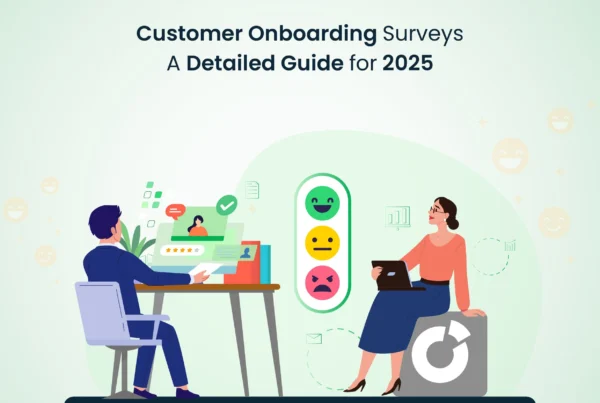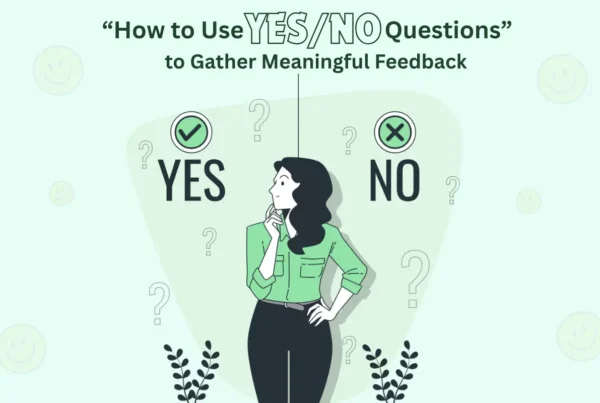As a part of a business, you expect favorable customer feedback. Everyone here appreciates these promoters, who frequently leave excellent reviews and return business. On the other hand, there are a few customer segments who are outspoken for your company. They rate you poorly, discuss your brand negatively, and provide in-depth negative feedback on your product or service. Detractors are those customers who provide unpleasant feedback, affect the company’s reputation, sway potential customers, and even demotivate existing and new customers.
However, you can turn these disappointed customers into promoters. In this blog we will discuss what are detractors and how you can transform them to your advantage rather than see them as a problem.
Let’s look at some strategies for converting detractors into promoters.
What are Detractors? Spotting them Easily
Detractors are customers who are unhappy with your brand offerings. Simply put, they are not satisfied with your service or products. This customer segment’s dissatisfaction is noticeable in the form of poor online reviews, negative feedback, minimized product purchases or services, subscription cancellations, and, most importantly, moving away to one of your competitors for a better experience.
Therefore, it is essential to recognize your detractors to prevent a negative reputation in the world of business. Below are some ways to spot your detractor customers easily:
Affect revenue and sales
Detractors, driven by malicious purposes, propagate falsehoods, resulting in a considerable decline in sales. As a result, a direct impact on the business’s revenue comes into the picture. If detractors leave your brand, you’ll need to find new customers in addition to repairing any damage that their negative feedback and comments may have done about your products or services.
Spread unfavorable rumors
A satisfied customer will tell others about their positive experience, whereas dissatisfied customers will spread negativity far more widely about your brand. Detractors propagating negative rumors before and after churning will harm your brand’s reputation. This will lead to an abrupt decline in your customer base and a subsequent deterioration of your ability to attract new customers.
Make a churn rate risky
The customer churn rate is an essential metric for expanding companies to measure and determine customer retention. Customer churn, on the other hand, is the proportion of your customer base that has temporarily stopped purchasing or utilizing your products or services. The higher the churn rate, the more customers are leaving the business. This puts your organization in a risky position and affects revenue and market losses.
Turn negative feedback into growth!❤️
Use piHappiness to convert detractors into brand promoters effortlessly.
How to Turn Detractors into Promoters?
Promoters are not as vocal as detractors. Every business has its detractors, but one must know how to turn them into promoters by being proactive and resolving their issues with an aim to reach the pinnacle in the world of business.
Wondering how you can turn your detractors into promoters? We have outlined here a few key strategic plans below for you to follow and convert your detractors to promoters:
Decode the Reason for the NPS Score
Gathering the NPS score is the initial and essential step. The true challenge is figuring out why detractors aren’t happy with your brand. In this scenario, you have two options: either carry out a follow-up survey and get detailed customer feedback or include an opportunity to get “open-ended comment”. Here, you can ask customers why they provided a particular NPS score for your service or product.
Prioritize the Concern
After gathering thorough customer feedback, it’s time to categorize the issues according to their urgency and relevance. For instance, you may need to prioritize the requirements for a fresh lead while addressing the grievances of existing customers, simultaneously.
Thus, it is important to understand the concern and work on the issues you have encountered from your present and existing customers.
Build Emotional Trust
When a customer has a complaint, you must accept that and adopt a sympathetic stance toward your detractors. Customers sometimes want to chat with assistance representatives primarily for any particular reason. Concerning this, you can install live chats, but the chatbots lack the human touch which is important for your customers to engage in the business.
Additionally, it might be rather frustrating for customers who need help. Always try to pay attention to what your customers say, understand their issues, and make pertinent suggestions. Addressing their concerns can help you identify problem areas and help you develop your offering.
Close the Feedback Loop
Responding to the detractors immediately and resolving their queries and concerns politely and respectfully is essential. To enhance your customer experience, you must also share their data and input with other areas of operation. It assists in gathering meaningful data and documenting their customers’ journey at several touchpoints. Try to gain insight into the aspects that influence consumer behavior.
Transform Your CRM: NPS Score Integration
The development and monitoring of current and prospective customer journeys is facilitated by customer relationship management (CRM) software. Integrating NPS scores with CRM software and gathering contact information like email addresses and phone numbers from NPS survey participants is essential. Using this information, you can quickly categorize your customers in the CRM database and develop targeted marketing campaigns for customers who are detractors, passives, and promoters.
Learn from the Mistakes
Your best source of information is unsatisfied customers. They will help you improve customer satisfaction and experience. It goes beyond simply exceeding your competitors’ scores or increasing NPS score by some points. It is all about earning their trust and demonstrating that you have their most significant interests in mind. If you promptly and appropriately handle the concerns raised by an unhappy customer, then you will notice that your detractors have become your huge promoters.
Deliver only on Promises
A lot of companies make excessive promises that they can’t fulfill, whether regarding features of the product, answering customer questions, providing services, or something else entirely.
Make only those promises that you can fulfill and the deadlines you can stick to. Be honest about your inability to come up with an acceptable solution and suggest the best alternative. In fact, if giving a refund will appease your detractors, then you should take that action soon to maintain honesty and transparency with the customers.
Make them feel Cared and Valued
Making your detractors feel special is difficult because they are dissatisfied with your product or service. However, employing strategies like getting reassurance from upper management or pointing them toward a competitor’s product can work wonders.
In A Nutshell
Each company typically has various customer segments: promoters, passives, and detractors. Therefore, before investing time and energy into the process of turning detractors into promoters, you should consider a few factors, such as the severity of your customers’ issues, their history of interactions, and their relationship with your company. This will help you turn unfavorable comments into insightful analyses that promote improvement, enhance customer loyalty, and drive positive change.
Thus, by combining several strategies, including using a variety of channels for gathering input, closing the feedback loop, connecting NPS to your CRM, and adopting a caring viewpoint, you can transform your detractors into your promoters quickly and respectfully.








